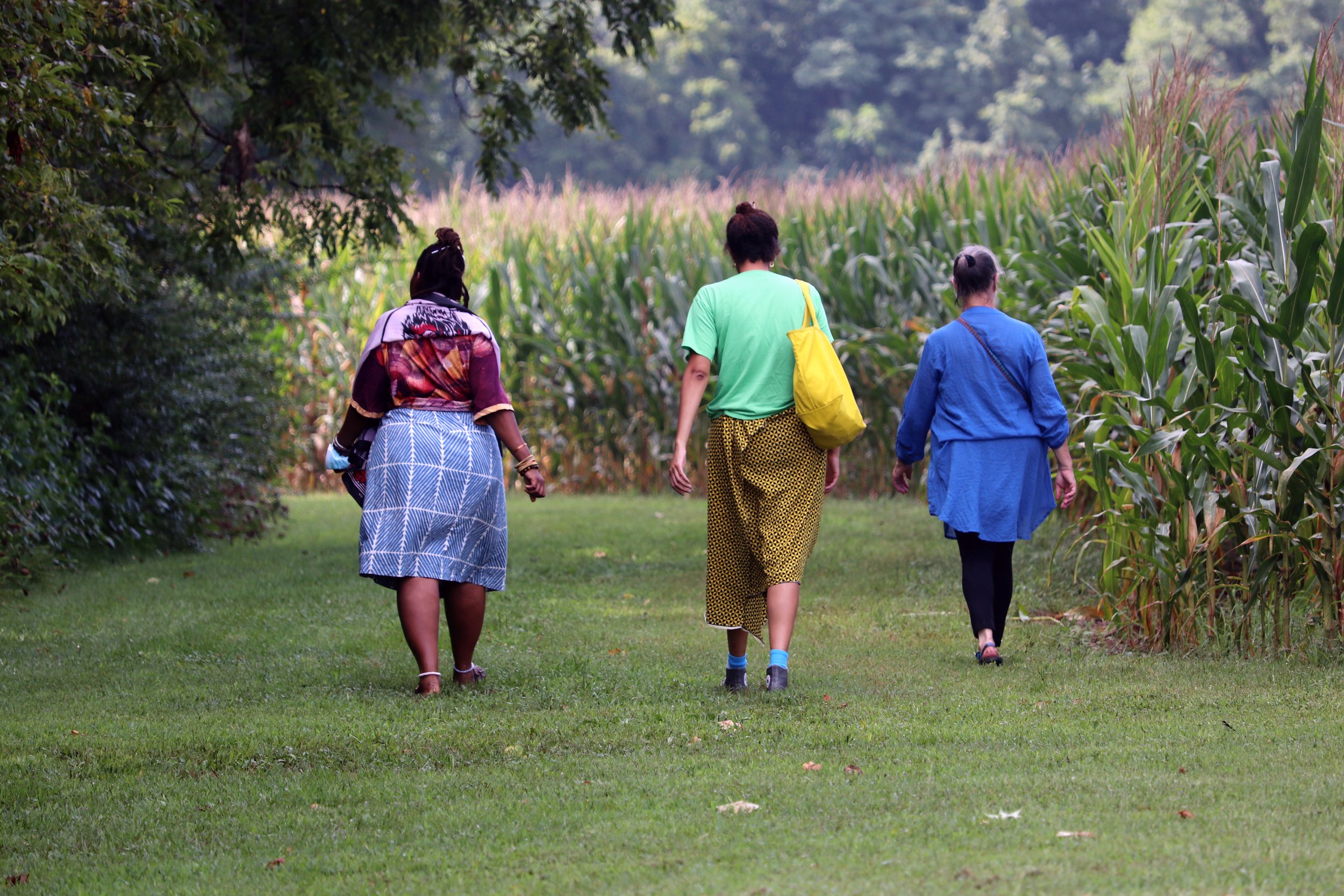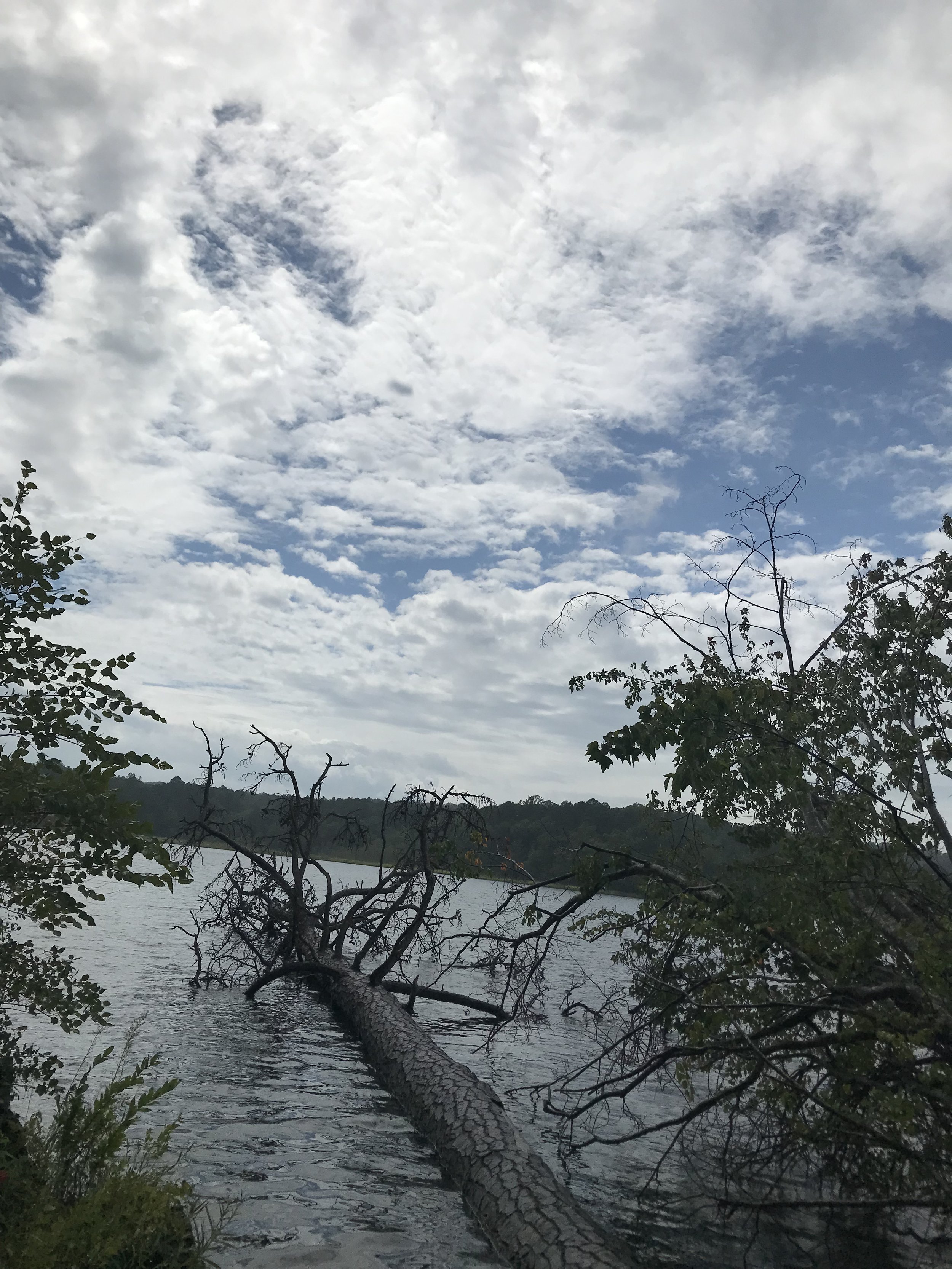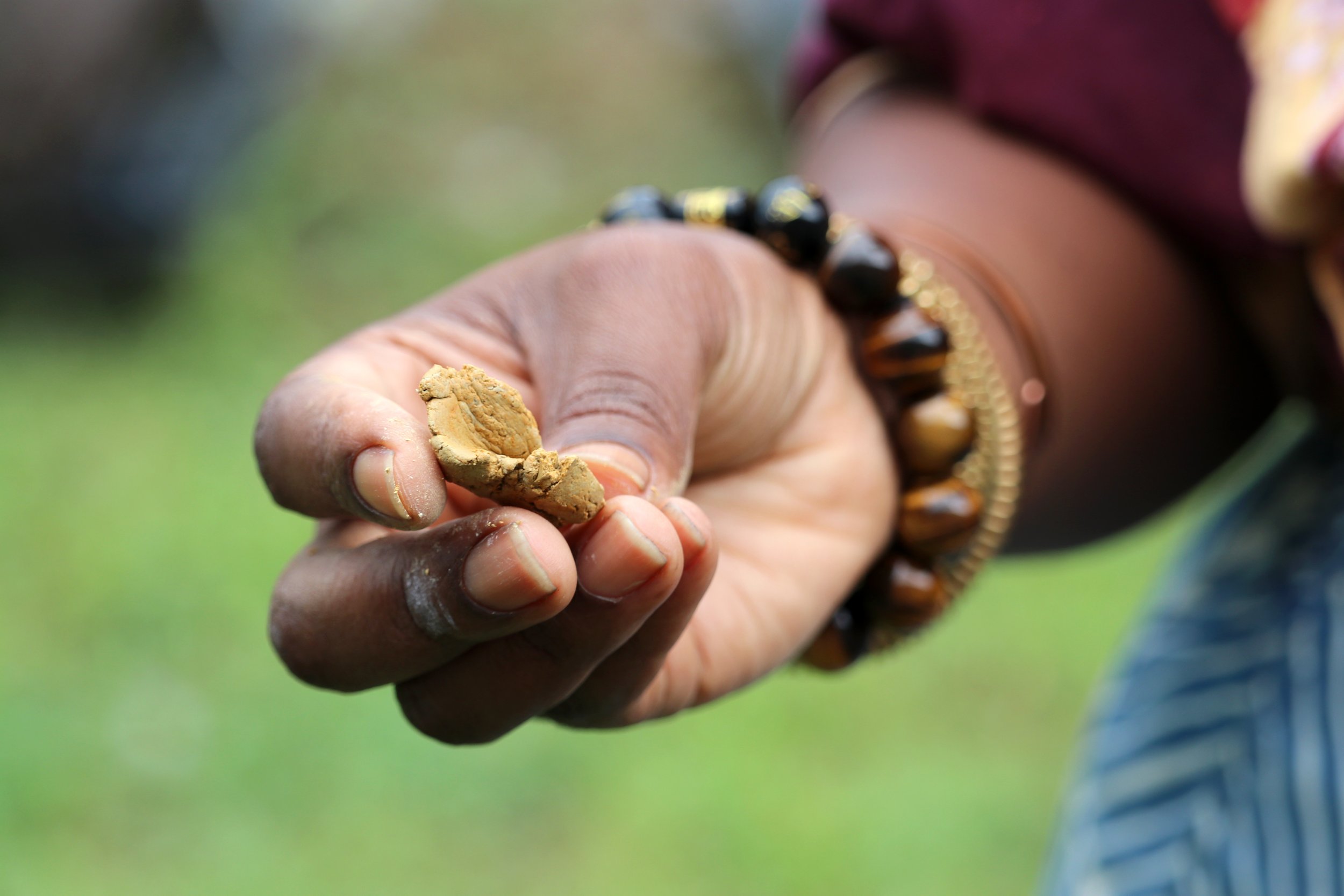Menokin Elements and the ICA
by Alice French, Director of Education
Menokin’s Elements is a series of conversations and reflections around those who craft, train, and preserve our material culture and built environments with modern and often provocative theory and practices, reflecting the social constructs of our history for today.
Recently, Menokin partnered with the Institute for Contemporary Art at Virginia Commonwealth University for an artist installation by Dineo Seshee Bopape. Dineo’s current work explores the history of ancestors in relationship to the trans-Atlantic slave trade. She has collected soils from slave-trading ports in Ghana, Senegal, South Africa, Louisiana and Virginia. In addition she has made spiritual connections with the waters that all run together across the world. Her multi-disciplinary work incorporates these elements of our planet through painting, sculptures and film, amplified with sounds from these places and spoken poetry.
Menokin is an experiential learning institution. We explore telling the stories of our cultural landscape through the many voices of scholars, researchers, artists, architects, and ecologists. Recent work with archaeologists, researchers and genealogists has expanded stories within the descendant community of enslaved families, who were forced into labor on the Menokin plantation.
Dineo was interested in exploring a landscape so unchanged after hundreds of years of movement. She came to experience the physical land and waterways, as well as spiritually listen and commune with this place, just as descendants of Menokin have come to walk the land of their ancestors. Dineo’s work acts as a metaphor for the miles of earth and waters we intersect at.
From left: Artist Dineo Seshee Bopape; exhibition curator Amber Esseiva; and Menokin Director of Education Alice French. They are walking on Menokin’s landscape. Photo by David Riley.
For her research, she came and paddled along Cat Point Creek, undeterred by the summer downpour we experienced! At the ruin, It felt like the woods were speaking to her as we heard the screeching sounds of an old tree teetering in the wind, ready to fall, sharing one last story with us. From the land she collected samples of clay. We also travelled on the Rappahannock River. Enslaved individuals would likely have travelled along these waters to drive the vast plantation system this country was founded on. We traveled to historic Fones Cliffs, walked the shores, explored the marshes, and returned just as the sun was setting. Our final stop was down a pier to gaze at the star-studded night sky and Milky Way.
Fallen tree on Cat Point Creek. Photo by Alice French.
The water at sunset. Photo by Alice French.
Dineo holding a piece of clay from Menokin’s soil. Photo by David Riley.
Part of the exhibition created by Dineo included small hand molds of the Menokin descendant community. These forms were created by clenching a piece of Menokin soil in your hand and forming a fist. These imprints recall images of black power and strength and are distributed throughout the installation.
Clay hand molds. Photo by Alice French.
Clay hand molds. Photo by Amber Esseiva.
Also within the installation, the walls are painted with soils from the various sites Dineo has traveled, including Menokin. These soil paintings evoke memories of land and sea. One wall painting has a pyramidal organization with squiggly lines rising from the base like fire or steam and the straighter lines above falling like rain, reminds me of the water cycle, a reincarnating and continuous cycle of life.
There are benches and carpets inviting the viewer to slow down and spend time here, listen, immerse oneself in all of the senses and become a part of this journey- this reclamation of the earth and the skies and the places which we intersect.
The exhibition is open through December 19 and is curated by Amber Esseiva.
Photo by Alice French.
Photo by David Riley.









